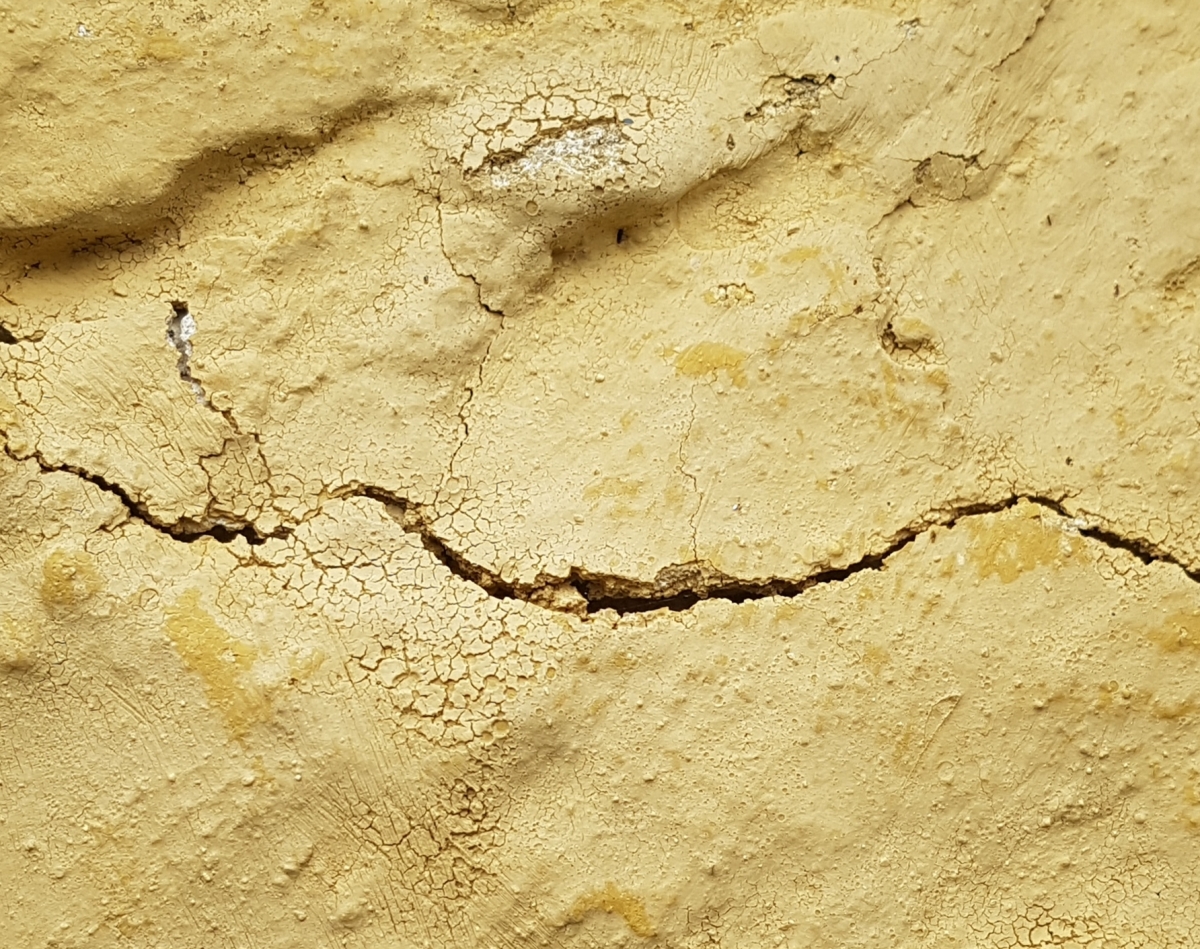The hot, dry weather has produced many more cracks than usual in our front wall.

Much of it is plain clay daub with thick layers of limewash and here and there a smear of recent cement where previous owners had tried to stop the clay falling out. There is no evidence of it ever having been rendered or plastered on laths.
The top surface is overall in a pretty bad way but rather than try extensive repairs in one go we just wait till a top layer of old limewash or cement disintegrates, as bits do regularly, and then do a proper patch repair with clay on the substrate and lime plaster as a top layer for protection. We can’t reproduce the existing surface because it must have taken many years for the crust of old limewash to build.
Patch repairing seems to be how the wall has always been treated, giving it a curious battered and uneven appearance, which we actually like. Some years back we agreed with the conservation officer to continue this approach. He was keen to see as much clay preserved as possible.
The trouble this year is that some very large surface patches are pulling away from the wall as the cracks spread, but we don’t have time soon to deal with them properly. So we used lime plaster with polyester fibres to stitch the loose bits together.
Lime plaster with fibres (or hair) from Anglia Lime dries to make a flexible sheet, and when put over cracks acts like a sticking plaster, or indeed gaffer tape, to hold the pieces together for a while. We tried it several years ago, for the same reason – delaying the bigger job to another season – and that temporary repair still holds.
However, this time we found a great network of cracks had developed, so the wall ended up looking piebald. The picture shows just one small section.

A touch of Ingilby’s limewash and the glaring white will soon become invisible against the rough and uneven surface. The deeper clay repairs can now wait a year, or maybe longer, until we are ready.

In several places there are substantial voids behind the surface which will require a good supply of clay daub to fill. It is not obvious how the voids developed. Insect action is one possibility.
